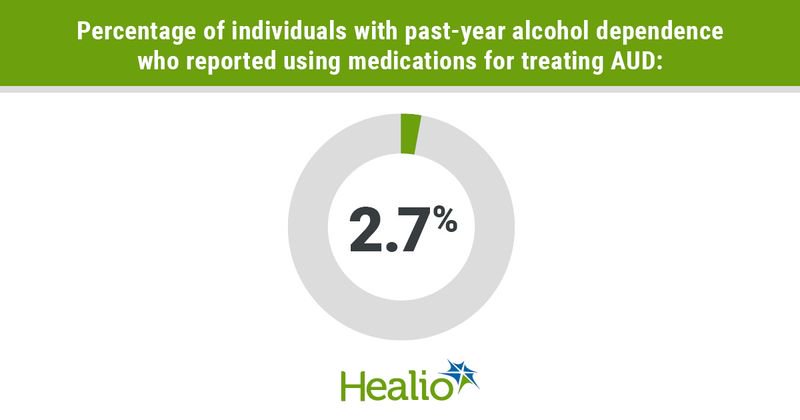Medications for treating alcohol use disorder rarely prescribed, used
Medications for treating alcohol use disorder were rarely prescribed to or used by adults with this disorder despite the existence of guidelines recommending their use, according to study results published in JAMA Psychiatry.
“Treatment rates for alcohol use disorder (AUD) are low (eg, 7.6% in 2019),” Beth Han, MD, PhD, MPH, of the NIH’s National Institute on Drug Abuse, and colleagues wrote. “The [FDA] has approved four evidence-based medications for treating AUD since 1949. To improve use of [medications for treating] AUD, the American Psychiatric Association released guidelines for pharmacological treatments of patients with AUD in 2017.

“However, little is known about prevalence and associations of using [medications for treating] AUD among U.S. adults with AUD,” the researchers added.
To address this research gap, Han and colleagues obtained data from 42,739 individuals (women = 53.4%) aged 18 years or older who participated in the 2019 National Survey on Drug Use and Health (NSDUH). The survey provided representative data of U.S. civilian, noninstitutionalized populations related to sociodemographic characteristics, past-year ED visits, illicit drug use, alcohol use and receipt of mental health care and any alcohol use treatment, such as at a specialty facility, ED, private physician’s office or self-help group. The survey incorporated DSM-IV diagnostic criteria to evaluate past-year illicit drug use disorder, AUD and major depressive episode. Further, survey respondents with past-year receipt of alcohol use treatment reported whether they used medications, including acamprosate, disulfiram and naltrexone oral/long-acting injectable formulation, prescribed by a physician or other health care professional to assist in reducing or stopping alcohol use. Han and colleagues estimated prevalence of use of medications for treating AUD among U.S. adults with AUD. They applied multivariable multinomial logistic regression to assess associations of using the medications and differences between using them and receiving alcohol use treatments that did not incorporate them.
Results showed a past-year prevalence of AUD among U.S. adults in 2019 of 5.6% (95% CI, 5.3-6), or 14.1 million individuals (95% CI, 13.2-15.1). Of these, 7.3% (95% CI, 5.8-8.8), or 1 million individuals (95% CI, 0.8-1.2), reported receiving any past-year alcohol use treatment, and 1.6% (95% CI, 0.9-2.3), or 223,000 individuals (95% CI, 127,000-319,000), reported using medications for treating AUD. A total of 2.7% (95% CI, 1.6-3.8) of the 7.9 million individuals with past-year alcohol dependence reported using medications for treating AUD. Among those with past-year AUD vs. those with no alcohol use treatment, the researchers noted an association between medications for treating AUD and residing in large metropolitan areas (adjusted OR [aOR] = 6.2; 95% CI, 1.6-24), frequent ED visits (three or more times; aOR = 6.6; 95% CI, 1.7-25.5), alcohol dependence (aOR = 16.1; 95% CI, 1.8-149.2) and receiving mental health care (aOR = 10.6; 95% CI, 3.1-35.9). Further, they observed an association between receiving nonmedication alcohol use treatment and having an ED visit (aOR = 1.9; 95% CI, 1.1-3.2), alcohol dependence (aOR = 2.6; 95% CI, 1.4- 4.9), receiving mental health care treatment (aOR = 2.5; 95% CI, 1.6-3.9) and having illicit drug use disorder (aOR = 2.8; 95% CI, 1.7-4.6).
“Although NSDUH is subject to recall and social-desirability biases, our results highlight the urgent need for improving access to and use of [medications for treating] AUD among adults with AUD,” Han and colleagues wrote.
Han reports no relevant financial disclosures. Please see the study for all other authors’ relevant financial disclosures.
